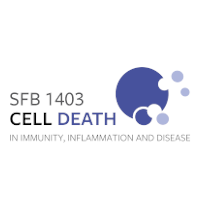A barley MLA receptor is targeted by a non-ribosomal peptide effector of the necrotrophic spot blotch fungus for disease susceptibility

Paul Schulze-Lefert - Assoc.
Department Plant Microbe Interactions, Max Planck Institute for Plant Breeding Research
Contact: schlef(a)mpipz.mpg.de
For more information visit: Schulze-Lefert Lab
Abstract
The evolutionary history of plant interactions with necrotrophic pathogens that feed on dying host cells and their virulence mechanisms remains fragmentary. We have isolated the barley gene Scs6, which is required for the necrotrophic fungus Bipolaris sorokiniana isolate ND90Pr to cause spot blotch disease (close collaboration with the laboratory of Shaobin Zhong, North Dakota, USA). Scs6 is located at the disease resistance gene locus Mildew locus a (Mla) and encodes an intracellular nucleotide-binding leucine-rich repeat receptor (NLR). In transgenic barley, Scs6 is sufficient to confer susceptibility to ND90Pr in accessions naturally lacking the receptor, resulting in infection-associated host cell death.
Expression of Scs6 in evolutionarily distant Nicotiana benthamiana reconstitutes a cell death response to an uncharacterized non-ribosomal peptide effector produced by ND90Pr-specific non-ribosomal peptide synthetases (NRPSs) encoded at the VHv1 virulence locus. Our data suggest that the heat-resistant effector directly activates the SCS6 receptor. Scs6 is an allelic variant of functionally diversified Mla resistance genes each conferring strain-specific immunity to barley powdery mildew isolates with a matching proteinaceous pathogen effector. Domain swaps between MLA and SCS6 NLRs and expression of the resulting hybrid proteins in N. benthamiana reveal that the SCS6 leucine-rich repeat domain is a specificity determinant for the NRPS-derived effector to activate the receptor. Scs6 evolved after the divergence of barley from wheat and is maintained in several wild barley populations with an incidence of 8%, suggesting a beneficial function for the host. Evolution of the bona fide immune receptor SCS6 targeted by the NRPS-derived effector was key for the emergence of strain-specific spot blotch disease in domesticated barley.
Recent Publications
2025
Lawson AW, Macha A, Neumann U, Gunkel M, Chai J, Behrmann E, Schulze-Lefert P. Purifying recombinant proteins from Nicotiana benthamiana for structural studies. Nat Protoc. 2025 Sep 9. doi: 10.1038/s41596-025-01249-2. Epub ahead of print. PMID: 40926020.
Lawson AW, Flores-Ibarra A, Cao Y, An C, Neumann U, Gunkel M, Saur IML, Chai J, Behrmann E, Schulze-Lefert P. The barley MLA13-AVRA13 heterodimer reveals principles for immunoreceptor recognition of RNase-like powdery mildew effectors. EMBO J. 2025 Feb 13. doi: 10.1038/s44318-025-00373-9. Epub ahead of print. PMID: 39948409.
Leng Y, Kümmel F, Zhao M, Molnár I, Doležel J, Logemann E, Köchner P, Xi P, Yang S, Moscou MJ, Fiedler JD, Du Y, Steuernagel B, Meinhardt S, Steffenson BJ, Schulze-Lefert P, Zhong S. A barley MLA immune receptor is activated by a fungal nonribosomal peptide effector for disease susceptibility. New Phytol. 2025 Feb;245(3):1197-1215. doi: 10.1111/nph.20289. Epub 2024 Dec 6. PMID: 39641654.
